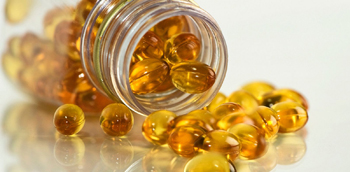London, Nov 17: Taking fish oil supplements could improve muscle function in older women and potentially increase their quality of life, according to a latest study.
 In the study led by the Universities of Glasgow and Aberdeen published today in The American Journal of Clinical Nutrition, scientists have found that supplementing the diet of older women with 3g of fish oil (omega-3) results in greater increase (when compared to a 3g of safflower oil placebo) in their muscle function when combined with resistance exercise training over 18 weeks.
In the study led by the Universities of Glasgow and Aberdeen published today in The American Journal of Clinical Nutrition, scientists have found that supplementing the diet of older women with 3g of fish oil (omega-3) results in greater increase (when compared to a 3g of safflower oil placebo) in their muscle function when combined with resistance exercise training over 18 weeks.
Before and after the exercise training programme researchers measured muscle size, using MRI, and muscle function, using a testing dynamometer, and calculated muscle quality (force produced relative to muscle size).
As expected, the resistance exercise training increased muscle size, function and quality in all groups of participants. In men, who were taking the fish oil supplements there were no extra gains in muscle function or size observed over the 18-week intervention period.
However, in women, those taking fish oil their muscle function, but not size, increased to a greater extent compared to those in the placebo group.
In women in the placebo group, exercise training resulted in an average strength increase of 16 per cent, however, when the exercises were combined with an intake of fish oil that improvement increased to an average of 34 per cent.
Stuart Gray from the University of Glasgow's Institute of Cardiovascular and Medical Sciences (formerly of the University of Aberdeen, where much of the study was completed) said: "These findings provide important information for nutritional guidelines in older people where policy makers may want to consider
recommendations for fish oil supplements to be consumed by older women. Why men do not see the same benefit as women is important to understand and the underlying mechanisms need to be studied."
Researchers highlighted the fact that this greater increase in muscle function noted in women was independent of any changes in muscle size with fish oil, such that it was muscle quality rather than size was improved.
The primary function of skeletal muscle is to carry out daily tasks, such as rising from a chair or getting on a bus, tasks often referred to as functional abilities.
However, both size and function progressively decrease as a normal part of healthy ageing. This decrease in function can result in a reduction in quality of life, increased falls risk and loss of independence.
Gray added: "With the percentage of people aged over 65 predicted to rise from 17 per cent, of the total population in 2010, to 23 per cent in 2035, it is crucial to develop effective treatments for the age-related loss of muscle function.
"Findings of a benefit in women are particularly important as women tend to live around four years longer than men and cross the "disability threshold", where functional abilities are lost, 10 years earlier than men.
The study, 'Sex-differences in the effect of fish oil supplementation on the adaptive response to resistance exercise training in older people: a randomised control trial' is published in The American Journal of Clinical Nutrition.





Comments
Add new comment